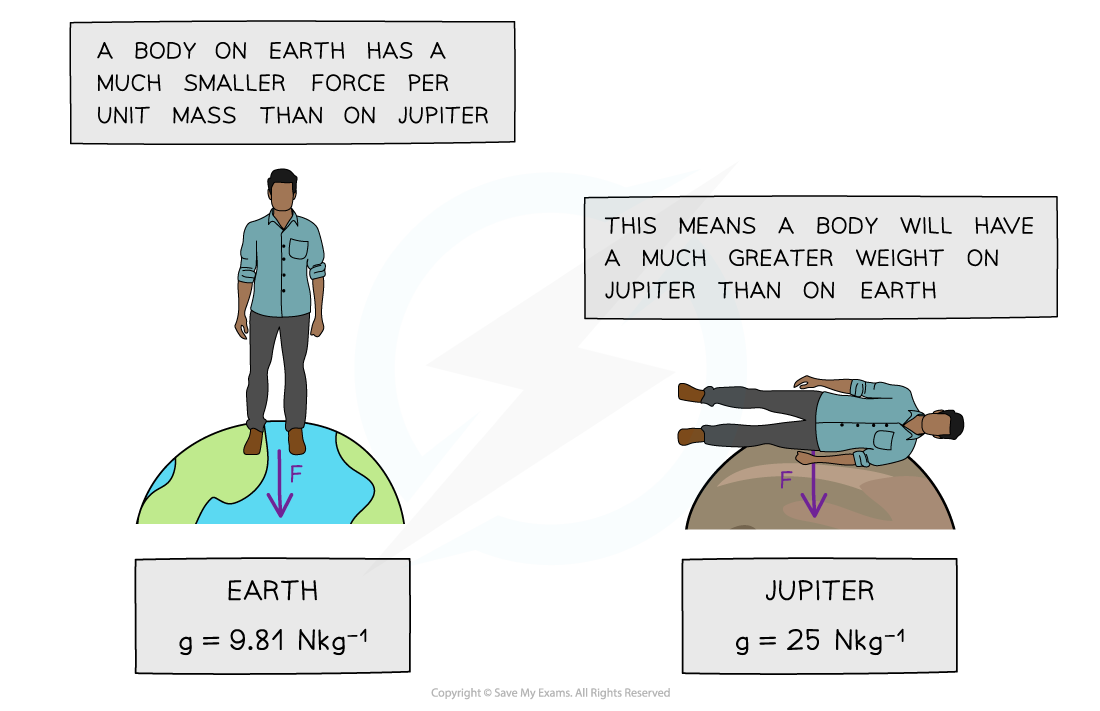Gravitational Field Strength (Edexcel International A Level (IAL) Physics): Revision Note
Exam code: YPH11
Gravitational Field Strength
There is a universal force of attraction between all matter with mass
This force is known as the ‘force due to gravity’ or the weight
The Earth’s gravitational field is responsible for the weight of all objects on Earth

The Earth's gravitational field produces an attractive force F, which is equal and opposite to the attractive force produced by the person's gravitational field
The gravitational field strength g at a point is defined as force F per unit mass m of an object at that point:

Where:
g = gravitational field strength (N kg–1)
F = force due to gravity, or weight (N)
m = mass (kg)
This equation shows that:
The larger the mass of an object, the greater its pull on another mass
On planets with a large value of g, the gravitational force per unit mass is greater than on planets with a smaller value of g
An object's mass remains the same at all points in space
However, on planets such as Jupiter, the weight of an object will be a lot greater than on a less massive planet, such as Earth
This means the gravitational force would be so high that humans, for example, would not be able to fully stand up (or, even worse...)

The weight force on Jupiter would be so large that even standing upright would be difficult
Factors that affect the gravitational field strength at the surface of a planet are:
The radius (or diameter) of the planet
The mass (or density) of the planet
Worked Example
Calculate the mass of an object with weight 10 N on Earth.
Answer:

Examiner Tips and Tricks
There is a big difference between g and G (sometimes referred to as ‘little g’ and ‘big G’ respectively).
g is the gravitational field strength, which varies depending on the size of the mass M producing the gravitational field and the distance r from its centre of mass
G is Newton’s Universal Gravitational Constant, which always has a value of 6.67 × 10–11 N m2 kg–2
In addition, remember the equation density ρ = mass m ÷ volume V, which may come in handy with calculations where the density of some object is given, rather than its mass!

Unlock more, it's free!
Did this page help you?